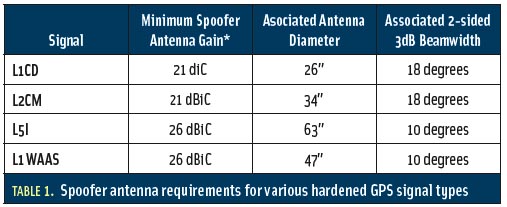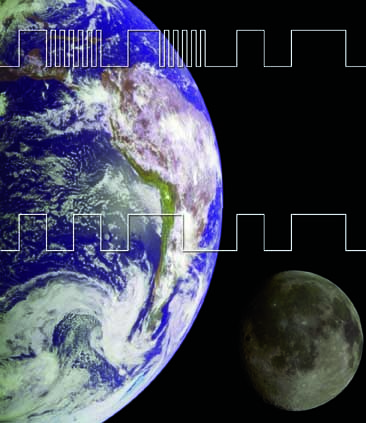Lockheed, Raytheon Complete First GPS III Launch Exercise

Raytheon Company and Lockheed Martin have successfully completed the first launch readiness exercise for the U.S. Air Force’s next-generation GPS III satellites.
By Inside GNSS
Raytheon Company and Lockheed Martin have successfully completed the first launch readiness exercise for the U.S. Air Force’s next-generation GPS III satellites.
By Inside GNSSThe Federal Aviation Administration (FAA) has told those awaiting their slice of the GPS civil program budget that the funds are on the way.
The money, which is supposed to support that portion of the GPS program springing from the needs of civilian users, has been held up for months. In fact, as of late August — with less than 40 days left to go in the fiscal year — the money had not been transferred to either the military’s GPS Directorate or the National Coordination Office (NCO) for Space-Based Positioning, Navigation, and Timing (PNT).
By Dee Ann DivisSIDEBAR: Genene Fisher’s Compass Points
As Solar Cycle 24 rolls around toward its maximum peak next May, when a hundred or more sunspots may appear during the course of a single day, no single navigator stands at the helm to guide the hundreds of companies, research groups, users, and policy workers through the uncharted realm of spiking solar activity and its inevitable effects on GNSS.
By Inside GNSS TABLE 1. Spoofer antenna requirements for various hardened GPS signal types
TABLE 1. Spoofer antenna requirements for various hardened GPS signal types
“Here is Edward Bear, coming downstairs now, bump, bump, bump, on the back of his head, behind Christopher Robin. It is, as far as he knows, the only way of coming downstairs, but sometimes he feels that there really is another way, if only he could stop bumping for a moment and think of it. And then he feels that perhaps there isn’t.”
– A.A. Milne, Winnie-the-Pooh
Is our faith in the integrity and infallibility of the Global Positioning System misplaced or, perhaps, insufficiently grounded?
By Inside GNSSThe nation’s top GPS experts pressed the Air Force this week to turn on the full capability of the L2C civil GPS signal that the military has been broadcasting without a navigation message despite having had signal-equipped satellites on orbit for years.
By Inside GNSS Photo by DAVID ILIFF. License: CC-BY-SA 3.0
Photo by DAVID ILIFF. License: CC-BY-SA 3.0Both Congress and the Pentagon are putting money on the table to bridge the gap created by delays in the development of the new GPS ground system.
As Inside GNSS first reported earlier this year the Next Generation Operational Control System, or OCX, is running roughly two years behind schedule. It had been expected to be delivered in 2015, however, General William L. Shelton, the commander of Air Force Space Command, said this spring that OCX would be delayed until 2016 or 2017.
By Inside GNSS
[Updated July 2] Appropriators in both the U.S. House and Senate have slashed next year’s funding for support of the civil portion of the GPS program. Lawmakers halved the portion of the Federal Aviation Administration budget dedicated to supporting the civil signals as well as the ground network monitoring of those signals.
By Inside GNSSThe U.S. Air Force has awarded Lockheed Martin a $68 million contract to provide mission readiness, launch, early orbit checkout, and on-orbit operations engineering support for the first two GPS III space vehicles.
Under the contract, Lockheed Martin will provide technical support to the Air Force’s 2nd Space Operations Squadron (2SOPS) and monitor the health and performance of the first two GPS III satellites from launch through their 15-year operational design lives.
By Inside GNSSLaunch of the first GPS III satellite has slipped to 2015 and completion of the ground control system is now delayed by up to two years, according to the chief of the Air Force’s space operations
“We’ll be ready to launch the first GPS III in 2015, but it now appears the next generation GPS Operational Control System, or OCX, won’t be ready for about a year or two after that,” General William L. Shelton, commander of Air Force Space Command (AFSPC) told attendees at the 28th Annual National Space Symposium.
By Inside GNSSReturn to main article: "Truth on the Range"
By Inside GNSS MBOC signal at top, BOC (1,1) at bottom
MBOC signal at top, BOC (1,1) at bottom(Updated May 21) U.S. warfighters could be affected and European navigation users could end up paying more if the British are able to enforce a patent on technology at the heart of the new GPS and Galileo civil signals.
By Inside GNSS
The launch of the first GPS III satellite has slipped to 2015 and completion of the ground control system is now delayed by up to two years, according to the chief of the Air Force’s space operations
“We’ll be ready to launch the first GPS III in 2015, but it now appears the next generation GPS Operational Control System, or OCX, won’t be ready for about a year or two after that,” General William L. Shelton, commander of Air Force Space Command told attendees at the 28th Annual National Space Symposium.
By Inside GNSS